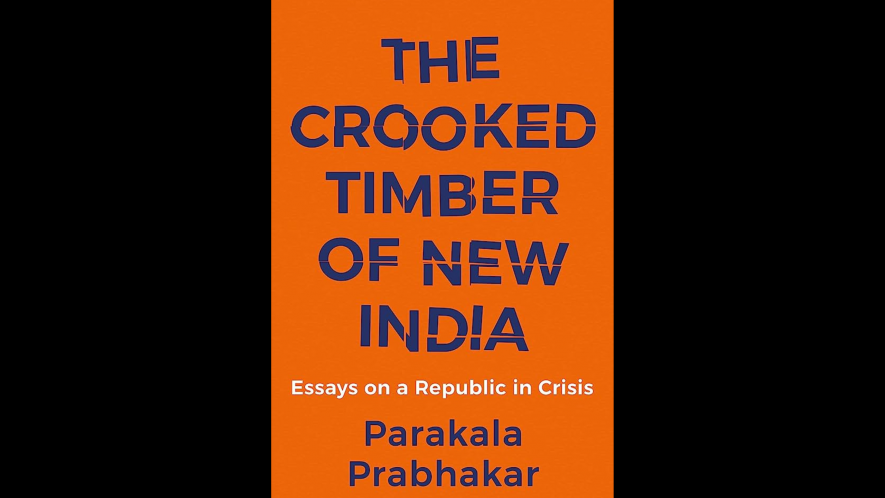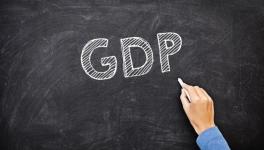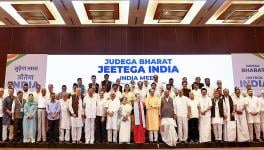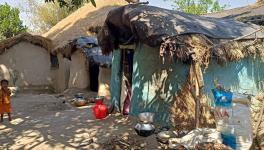An Economist’s Staggering Evaluation of Government Incompetence

Image Courtesy: Amazon.in
The usual self-praise that Bharatiya Janata Party leaders indulge in is passé—the party’s president JP Nadda, has now asserted that its leaders reached out to people with a report card of their nine years of governance and the feedback they got suggested the masses are “content”.
Parakala Prabhakar, an economist by training, takes this claim apart in his latest book, aptly titled The Crooked Timber of New India: Essays on a Republic in Crisis. The book, a compilation of essays published by Speaking Tiger Books, is an authentic report card that underscores the contrast between the claims and reality that have marked both Prime Minister Narendra Modi’s governments.
Incisive and with a keen eye for detail, Prabhakar exposes the fundamental issues that have plagued the country since 2014. They prompt the readers to ponder the true nature of India’s evolving political landscape as he examines the layers of challenges that lurk beneath the façade of apparent progress; he unveils the fault lines often disregarded by the clamour of the mainstream media.
In the introduction, the author brings specific perspectives to the forefront. First, he highlights the irony of government supporters seeking solutions to problems that have now been marginalised. The popular gimmick of urging people to be ‘positive’, pursued even by media channels, has covertly served as a convenient tactic to divert attention and evade accountability. The author emphasises that such narratives shoved down our throats are nothing but traps, a ‘sycophantic motif to manipulate public discourse’.
The author keenly observes the Modi-led government in its two tenures. The first tenure promised growth and development, a stronger fiduciary relation with the states, and shunning the ‘poison of casteism and communalism’. The second term had new promises after the first ones were totally reneged. In it, the BJP served the hemlock of hate to the masses through the mainstream media.
One striking characteristic of the BJP’s tenure is the conspicuous silence permeating both Modi terms. The author underscores the strategic nature of the Prime Minister’s speeches. Crafted in advance, they demand scrutiny of what he says and, more importantly, what he chooses not to say: His silence on India’s unemployment rate, the COVID-19 deaths, the turmoil in Manipur which has displaced thousands and killed well over a hundred people.
The author refers to Modi’s speech in August 2021 from the Red Fort, when he spoke about the loss of life. It was not a tribute to those who succumbed to COVID-19 because of poor health facilities but to those slain during the Partition.
Silence is so dear to the Modi-led BJP that when, during a ‘quasi’ first press conference in the United States, Sabrina Siddiqui questioned him on the condition of the minorities and democracy in India, the troll brigade went berserk, harassing the journalist—an act the White House deemed antithetical to democracy.
A similar liking of silence was seen in the ongoing crisis in Manipur. An FIR has been lodged against the fact-finding committee members for stating that the violence was state-sponsored. Considering these instances, which occurred before and after the publication of Prabhakar’s book, his use of the word ‘egocratic’ to describe the government seems inch-perfect.
Prabhakar presents the reader with a series of hard-hitting data. At the dawn of this decade, India experienced an alarming surge in poverty, with an additional 7.5 crore people pushed into its clutches after the pandemic. It means a rise from 5.9 crore poor in 2020 to 13.4 crore in 2021. Worst was India’s further slip in the Global Hunger Index from 101 in 2021 to 107 in 2022. This slide accentuates the gravity of the situation. It is aggravated by the government’s puzzling silence on the skyrocketing unemployment rates, which reached a 45-year high in 2017-2018. Unfortunately, the lack of comprehensive data obscures the extent of the suffering of the jobless youth, which has let the government leave their ravaged conditions unaddressed and exacerbate their struggles.
The middle-income category, too, had to face a severe setback. Some 3.2 crore people have slipped off the ‘middle-class’ bracket. This decline is particularly noteworthy as India accounts for a staggering 60% of the global population that tumbled from the middle-income to low-income category—became poor, in other words. Comparing India with China, which has a similar population density and was just as affected by the spread of COVID-19, the author finds that those who slipped off the low-income cliff into the abyss of poverty were limited to just 10 lakh people. And as the middle-income category contracted in India, the middle-income class actually grew by three crore in China!
The author records the precarious situation of free speech in India and the concerning surge in internet shutdowns since the current regime came to power. Disturbingly, in 2020 alone, India accounted for a staggering 109 out of 155 reported worldwide internet shutdowns. This trend reflects a growing climate of censorship and control over the digital spheres of speech and expression. However, the assault on free speech extends beyond internet shutdowns, as the government’s heavy-handed approach encompasses blocking 9,849 posts, URLs, and web pages.
The trend of stifling criticism and commentary has intensified since the current regime assumed power in 2019, as evidenced by recent revelations from Twitter’s co-founder, Jack Dorsey. Dorsey recently disclosed that the social media platform faced threats demanding the removal or restriction of posts supporting the farmer’s protest. Twitter was threatened to shut down in India if the ‘government-desired’ actions were not taken, though the government predictably denied this charge.
In the concluding chapter, ‘A Pandemic Log Book 2021’, the author leaves no stone unturned in examining the multifaceted nature of the unprecedented crisis. The chapter explores not only the social and economic ramifications but shines a light on the glaring gaps in governance. One particularly concerning aspect is the profound impact on children and the visibly stark technological divide they faced despite the cheers of ‘Digital India’. A mere 3.5 crore out of 33 crore students had access to online education. This inequity was compounded by the disturbing fact that India is home to one of the largest populations of malnourished children worldwide. Drawing from pre-pandemic data, the author aptly remarks that a country aspiring to be a Vishwaguru should prioritise ‘teach its children well, feed them well, and keep them safe and happy.’
As we transition from the era of Amrit Kal (Ambrosial Era) to the Kartavya Kal (Dutiful Era), it is incumbent upon citizens to embrace their duty to ask the government relevant questions. Should these questions remain unanswered, it becomes imperative that we rally together and raise our voices, demanding a vibrant democracy that upholds accountability, efficiency and responsiveness. If not, the citizens should waste no time to change their rulers democratically.
The author is a lawyer practising in Delhi. The views are personal.
Get the latest reports & analysis with people's perspective on Protests, movements & deep analytical videos, discussions of the current affairs in your Telegram app. Subscribe to NewsClick's Telegram channel & get Real-Time updates on stories, as they get published on our website.






















